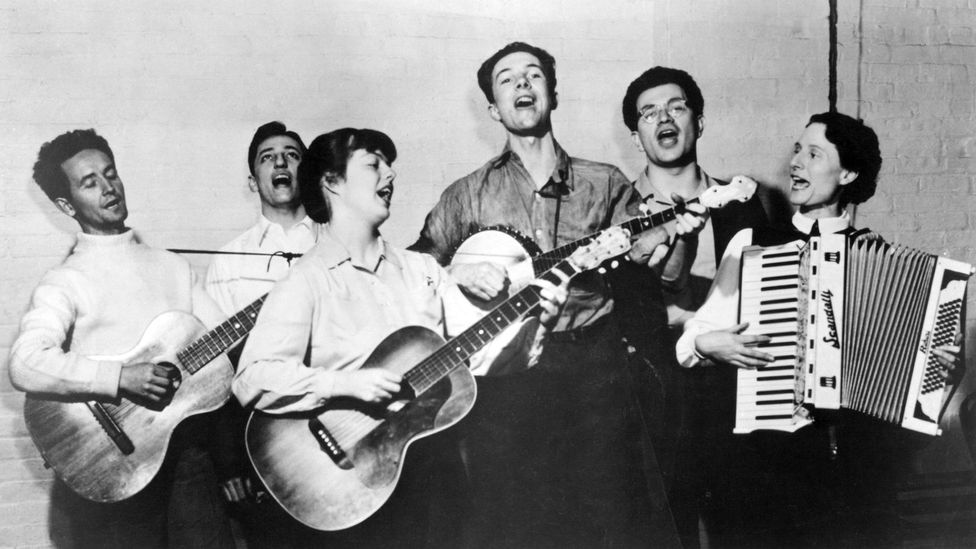I
In the 2020 TV series Mrs America, Sarah Paulson plays Alice Macray, a fictional anti-feminist 1970s housewife who is campaigning to thwart the ratification of the Equal Rights Amendment. In the penultimate episode, Alice attends the 1977 National Women’s Conference in Houston with a view to sabotaging its platform, but a mysterious white pill melts her defences and sends her on a dream-like journey through the venue. At one point, she wanders into the ‘gay lounge’, where she blissfully sings along to the late Woody Guthrie’s This Land Is Your Land. Elated, she tells one feminist activist that she sings it at home with her kids and the activist responds that a socialist wrote it. Alice laughs incredulously. “Come on, don’t be ridiculous!” When the activist insists that it’s “a Marxist song,” Alice giggles. “Oh no, no, no. It’s patriotic.” The activist smiles. “Exactly.”
It’s a sharp little scene which points out how two political opponents could both relate to Guthrie’s generous vision of the US, but it also raises a crucial question about the significance of a song so famous that it has been described as an ‘alternative national anthem’. Not knowing about the story behind the song may make it universal, but is that at the cost of diluting it?
More like this:
– How The Age of Innocence defined its era
Woody Guthrie lived a classic American life, overflowing with adventure, idealism and tragedy. He was born in Okemah, Oklahoma in 1912. His father Charley was a landlord with political aspirations, but fate did not favour the Guthries. One house fire, in 1919, killed Woody’s older sister Clara. Another, in 1927, sent his mother Nora, who suffered from the degenerative disease Huntington’s chorea, to a mental institution. Charley moved to Pampa, Texas to recover from his burns and asked Woody to join him two years later.





